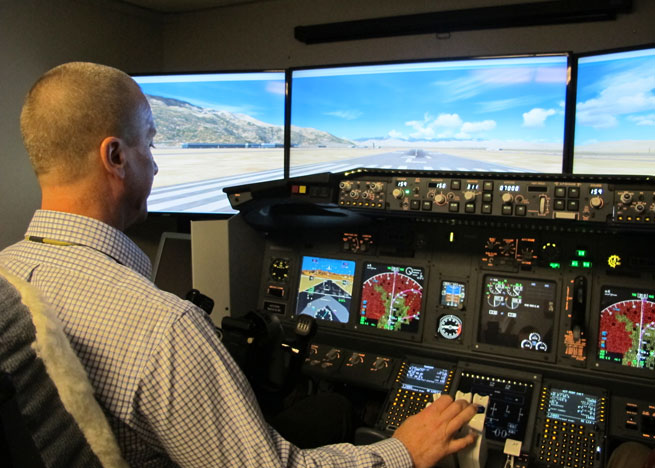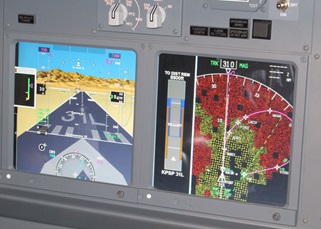
On March 20, 2009, the crew of an Airbus A340 began a partial-power takeoff in Melbourne, Australia. The aircraft struggled to lift off, and trying to force it off the ground resulted in a tailstrike. With runway disappearing, the captain gave the throttles full thrust, and the aircraft lifted off after passing the end of the runway and striking a light and antennae—narrowly averting a more serious excursion.
Investigators traced the accident chain to an error entering the takeoff weight into the electronic flight bag: The pilots had based performance calculations on a weight 100 tons lighter than they had intended. The flight crew missed opportunities to identify the error and did not detect the degraded takeoff performance until very late in the takeoff roll, according to an analysis by the Australian Transport Safety Bureau.
Takeoff accidents represent a disproportionate number of fatal accidents in aviation, with runway excursions among the top factors. This presents a challenge for avionics manufacturers: how to provide a reliable takeoff performance monitor that can identify a problem in time to abort a takeoff safely—and avoid nuisance alerts that could risk unnecessary high-speed rejected takeoffs?
Aerospace giant Honeywell is taking aim at the problem with an energy display designed to give pilots a look at key takeoff performance metrics and both visual and aural warnings if a takeoff should be aborted.
Honeywell Human Factors Senior Chief Engineer Ratan Khatwa said the company has recently started to pay more attention to addressing safety issues during takeoff and initial climb. A Boeing analysis of fatal jet accidents from 2003 through 2012 found that some 16 percent were during takeoff and initial climb, estimated to be only about 2 percent of total flight time.
Honeywell’s SmartRunway product already offers a caution alert if flaps are not configured for takeoff, and SmartLanding gives cues to the flight crew if an approach is too high, too fast, or unstable. SmartRunway also has alerts for insufficient runway, but they do not take into account aircraft weight or runway conditions, which can have a significant effect on the performance of larger aircraft. By comparing predicted and actual acceleration, Honeywell’s new software can alert the flight crew to insufficient takeoff performance in more scenarios—even if performance calculations are based on incorrect data.

A prototype display shown to reporters in December marks the point where the aircraft is predicted to reach V1, before which the go/no-go decision must be made, with a triangle. This point must remain within the brown “can stop bars” to ensure that an aircraft can stop before the end of the runway in a rejected takeoff. Overlapping the brown bars are the blue “can go bars”; the aircraft must rotate within the span of the blue bars to ensure a safe takeoff in the runway remaining. Another potential display simplifies the information further, marking the acceleration on a band of yellow and green.
To demonstrate the technology, Honeywell’s Steve Johnson set up for takeoff on Runway 31L in Palm Springs, Calif., in the simulator. He advanced the throttle to a setting too low for the weight of the aircraft and started the takeoff roll, with distance remaining ticking down on the display. At 80 knots, a yellow box framed the runway and “ACCEL LOW” appeared at the top of the screen.
“Caution: acceleration, acceleration,” said a female voice from the simulator setup. Johnson cut the throttle and braked in the runway remaining. The alert triggers at 80 knots, a relatively low speed, to give pilots time to abort a takeoff safely and avoid high-speed rejected takeoffs.
The technology is expected to be unveiled in the coming years, and the aural alert will be available as a retrofit. Honeywell hopes it will whittle away at the takeoff accident rate by breaking one more link in potential accident chains.



